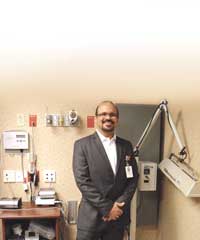Last Cigarette – There Are Plenty of Good Reasons to Quit Smoking
Every year, on the third Thursday of November, smokers across the nation take part in the American Cancer Society’s Great American Smokeout event. Encourage someone you know to use the date to make a plan to quit, or plan in advance and then quit smoking that day. By quitting — even for one day — smokers will be taking an important step toward a healthier life and reducing their cancer risk.
About 36.5 million Americans still smoke cigarettes, and tobacco use remains the single largest preventable cause of disease and premature death in the world. While cigarette smoking rates have dropped (from 42{06cf2b9696b159f874511d23dbc893eb1ac83014175ed30550cfff22781411e5} in 1965 to 15.1{06cf2b9696b159f874511d23dbc893eb1ac83014175ed30550cfff22781411e5} in 2015), cigar, pipe, and hookah — other dangerous and addictive ways to smoke tobacco — are very much on the rise. Smoking kills people; there’s no ‘safe’ way to smoke tobacco.
Quitting smoking has immediate and long-term benefits at any age. Quitting is difficult, but you can increase your chances of success with help. Getting help through counseling or medications can double or triple the chances of quitting successfully.
It’s never too late to quit using tobacco. The sooner you quit, the more you can reduce your chances of getting cancer and other diseases. Within minutes of smoking your last cigarette, your body begins to recover. For example:
- Twenty minutes after quitting, your heart rate and blood pressure drop.
- Twelve hours after quitting, the carbon monoxide level in your blood drops to normal.
- Two weeks to three months after quitting, your circulation improves, and your lung function increases.
- One to nine months after quitting, coughing and shortness of breath decrease. Tiny hair-like structures that move mucus out of the lungs (called cilia) start to regain normal function in your lungs, increasing their ability to handle mucus, clean the lungs, and reduce the risk of infection.
- One year after quitting, the excess risk of coronary heart disease is half that of someone who still smokes, and heart attack risk drops dramatically.
- Five years after quitting, your risk of cancers of the mouth, throat, esophagus, and bladder is cut in half. Cervical cancer risk falls to that of a non-smoker. Your stroke risk can fall to that of a non-smoker after two to five years.
- Ten years after quitting, your risk of dying from lung cancer is about half that of a person who is still smoking. Your risk of cancer of the larynx (voice box) and pancreas decreases.
- Fifteen years after quitting, your risk of coronary heart disease is that of a non-smoker.
These are just a few of the benefits of quitting smoking for good. Quitting smoking lowers your risk of diabetes, lets blood vessels work better, and helps your heart and lungs. Life expectancy for smokers is at least 10 years shorter than that of non-smokers. Quitting smoking before the age of 40 reduces the risk of dying from smoking-related disease by about 90{06cf2b9696b159f874511d23dbc893eb1ac83014175ed30550cfff22781411e5}.
Quitting while you’re younger will reduce your health risks more, but quitting at any age can give back years of life that would be lost by continuing to smoke.


